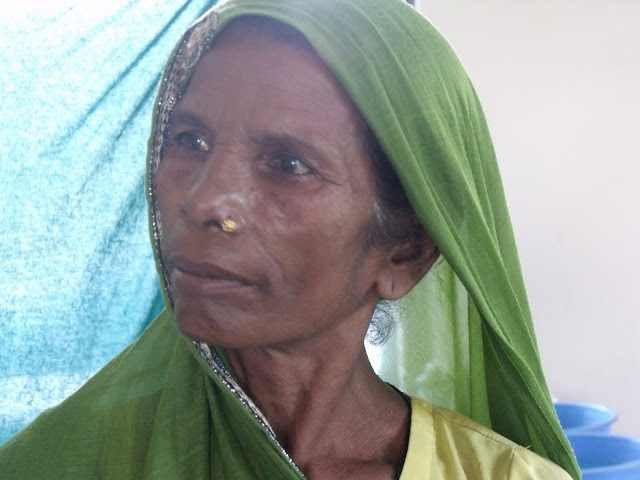While in the Terai we learn't some more about the traditions and
superstitions that are particular to the plains area in the South of
Nepal. One tradition that shocked us is the practice of early child
marriage - families will arrange the marraige of their children when
they are only 5 - 8 years old. A ceremony will be held at this time,
with the husband and wife only living together when they reach puberty
or their late teens. Sometimes the girl child (wife) will go live with
the husbands family immediately after the wedding with both children
growing up together. The women tend to be very sub-servient, and many
miss out on an education altogether. Education is not viewed as a
priority when the girl child will grow up to marry into and belong to
the husbands family! Others that do go to school tend to drop out
early due to pressure on them to help with household chores, young
marraiges, and a lack of proper sanitation facilities at the schools.
A lack of education also breeds a healthy environment for superstition
... one belief still prominant in the Terai is that of witch-craft,
also known as Bokshi in Nepali. Some parallels could be drawn with
medieval England. One person or a group of people will accuse a woman
of being a witch, and she will be ostracised from the community. If a
woman is believed to be guilty of Bokshi villagers will put human
excretment in her mouth and to beat her to drive the evil spirits
away. Superstitions like this were actively encouraged and used by the
Maoist rebels during the civil war as it enabled greater control over
the local community.
Fortunately, local NGOs are working to improve this situation in the
Terai through both education and legal aid. We met with the Jan
Jagaran Youth Club (JJYC) who run many programs in the Bara region,
including programs to encourage the education of girls and paralegal
training. Paralegal training has been given to a group of village
women to enable them to solve conflicts within the village, avoiding
the cost of lawyer which is unaffordable to all except the most
wealthy of villagers. In fact the system is supported by the local
legal community with many lawyers and barristers providing support and
advice to the paralegals pro bono. Many people are unaware of their
basic rights, and the countries laws. This training is slowly helping
to improve this situation. In a recent witchcraft case we were shown,
the victim had been accused of Bokshi by a village rival and
subsequently punished. The victim approached her village paralegal for
help. The paralegal sought advice from local barristers (the woman who
had accused the victim had bribed the local policemen, the victims
only previous avenue of help). With the help of the entire group of
paralegals and support of the local legal community a large village
meeting was called with both women having their say in the open air.
The victim was able to clear her name in front of the entire village
and the accuser was ordered to pay a hefty fine to the victim. This
did not fully please the victim who demanded an eye for an eye but the
paralegals were able to inform her that she would be the one breaking
the law in that case and the matter was resolved.
This shows how deeply rooted cultrual beliefs are affecting the
devolepment of poor, rural areas of Nepal. The path to resolving these
issues will be a long one but with local groups like JJYC and CDRA
doing good grassroots work we are moving in the right direction.


















